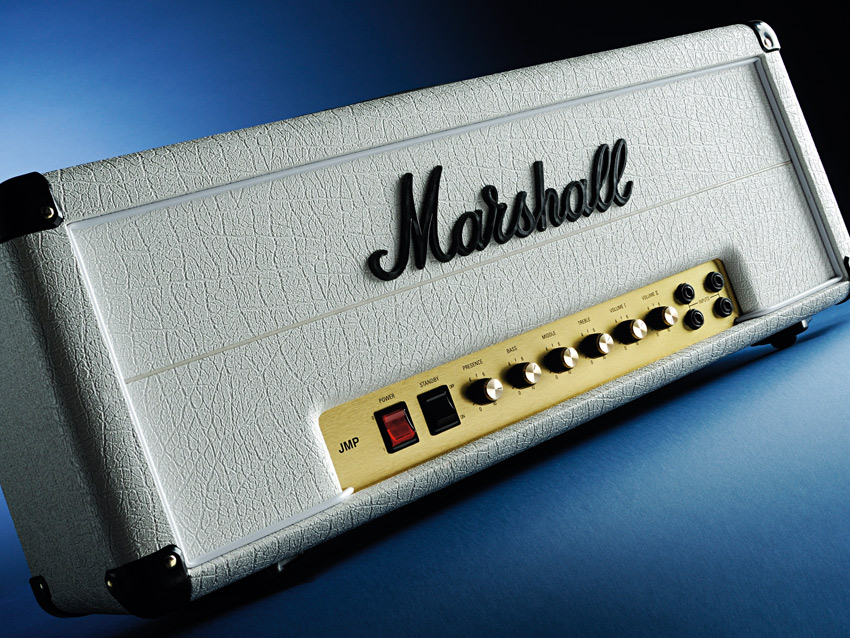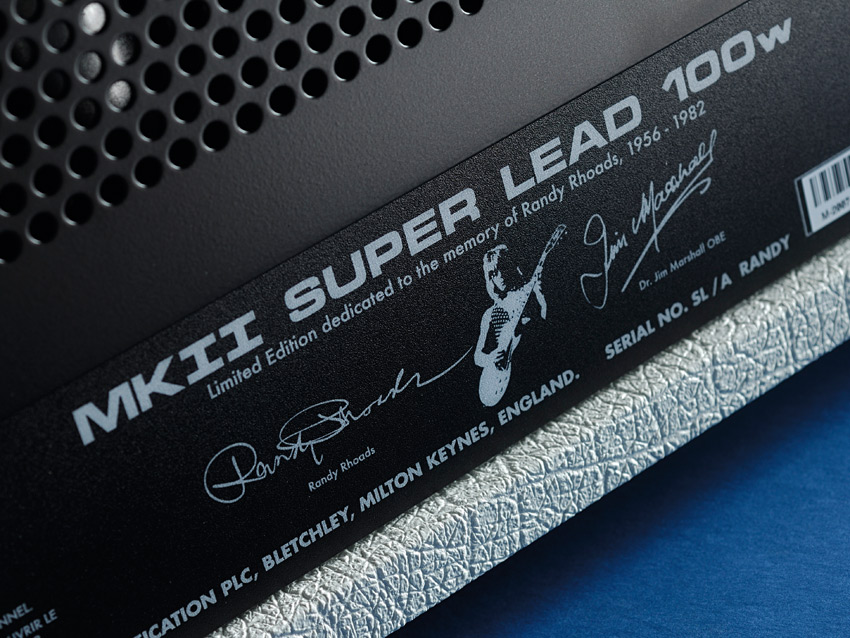MusicRadar Verdict
This is a fitting and toneful tribute, but you do have to crank it up.
Pros
- +
Much thought and research has gone into making this every bit as good as it should be. The white livery is very cool.
Cons
- -
Don’t underestimate the sheer power any Marshall 100-watt ‘Plexi’ – anyone without decent sized gigs or a power attenuator needs not apply.
MusicRadar's got your back


Randy Rhoads' guitar sound wasn't rocket science: he simply purchased the amp he wanted and used it exclusively throughout his career. That amp, finished in white, was a Marshall JMP 1959 Super Lead bought in 1980 after a visit to the company's factory, and it's upon that very amplifier - including its modifications - that this new 1959RR has been based.
It was Marshall's vastly experienced Signature Series development engineer Danny Thomas who took the concept's reigns and here he takes up the story behind the new amp:
"I went out to Musonia in North Hollywood," he says. "I was allowed complete access to the amp. I took it apart, measured and checked it all against records I had from other amps produced at that time: it was a stock JMP 1959.
"They took all of the equipment they received back from the Ozzy tour after Randy's death out of storage and brought it over," he continues. "Basically we opened up the flight cases and took out the gear.
"We checked it through, drew sketches of the circuits, catalogued it, measured it, and took photos. Then we put that data into a prototype back here [at Marshall HQ in Milton Keynes]."
"Compared to a standard 'Plexi' the modded channel II section has noticeably more gain to play with."
Was there anything that made Randy's amp somehow different from others made at the time? "Surprisingly, when I was checking the circuits, I did find something that was out of place, a resistor that had been cut and moved, so I duly noted that."
He continues: "I also noted who had wired and tested it, and when we got back to the factory I called the test manager from the day. He remembered meeting Randy Rhoads and told me he'd tested and modded the amp for him."
Ah yes, the famous mod. How did that work? "I asked him what he'd done and he'd cascaded the first valve: the inputs from the normal channel get fed back through the input of the high treble channel. He said we used to do that occasionally for some people when they wanted a bit more gain and guts, and, as Randy had asked him if there was anything he could do to get it a bit beefier, that's what he did."
How have you included the mod into the 1959RR? "Channel one is a normal '59 'Plexi' and channel two has the mod on it, but the thing is to pull back on volume one. Randy actually had both volumes set to about six and six and a half. So volume two was driving a great deal in to the next half of the valve, and then that again was opened up a fair whack.
"You get it loud and you're getting in the zone. The other thing is to pull the bass down. Actually, the rest of his settings were presence to six, middle to five-and-a-half, treble to six-and-a-half: that should give an approximation of the tone."
So, with all that background info and knowledge to hand, the only thing left to do is plug in. And lest we forget, no 100-watt Super Lead is an amp for he faint-hearted...
Sounds
On revving up the amp for initial sound tests, we find that - just like the regular 1959 model - the 1959RR has immense, visceral power in abundance. We asked Danny if there were any tricks of the trade when it came to obtaining the best from a singing 100-watt Marshall 'Plexi'?
"These amps are designed to throw sound to the back of Wembley Arena, so simple things like turning your cab around can make all the difference," he says.
"In modern day use, you have to be sensible and even be prepared to tell the soundman that you won't need your guitar through the PA. Don't be intimidated either: you don't have to play painfully loud to get a great tone out of a Marshall, but they are designed as pieces of public address equipment and they have to breathe with the guitar."
With Randy's own settings dialled, we take Danny's advice and turn our 4 x 12 cab to the wall, which certainly makes things a tad easier to deal with in a relatively small space.
Compared to a standard 'Plexi' the modded channel II section has noticeably more gain to play with, and what's more the character is altogether more full and indeed open sounding than you could expect from a Tube Screamer or similar. Cranked, there's also a good dollop of power tube drive on offer, adding its own inimitable dynamic: essential to balls-out classic rock tone.
We do find it difficult to perfectly recreate the abrasive edge of high gain we remember from those Ozzy albums. In fact Danny tells us that Randy did use an EQ and BOSS distortion 'as a booster', something you may well want to add to this rig as, like many simple designs, it takes to high-quality pedals very well indeed.
MusicRadar is the number 1 website for music makers of all kinds, be they guitarists, drummers, keyboard players, djs or producers...
GEAR: We help musicians find the best gear with top-ranking gear round-ups and high- quality, authoritative reviews by a wide team of highly experienced experts.
TIPS: We also provide tuition, from bite-sized tips to advanced work-outs and guidance from recognised musicians and stars.
STARS: We talk to musicians and stars about their creative processes, and the nuts and bolts of their gear and technique. We give fans an insight into the actual craft of music making that no other music website can.
“We were arguing a lot and we were miserable”: How Green Day exceeded expectations with their most ambitious song
"There’s plenty for us guitarists to learn – and ‘less is more’ is the overriding lesson": how to play like George Harrison on The Beatles' Abbey Road
“They didn’t like Prince’s bikini underwear”: Prince’s support sets for the The Rolling Stones in 1981 are remembered as disastrous, but guitarist Dez Dickerson says that the the crowd reaction wasn’t as bad as people think










